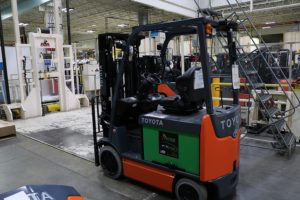Archive for January, 2023
How To Problem Solve With Toyota Lean Management
Albert Einstein once wrote, “We cannot solve our problems with the same thinking we used when we created them.” Simply put, coming up with creative and innovative solutions to problems oftentimes requires you to look at the problem with a fresh perspective. As we’ve discussed in previous Toyota Lean Management blog posts, recognizing and cutting down on waste is critical to increasing your efficiency, reducing costs, and improving throughput. However, in order to make these improvements and see positive changes in ROI, a key step is recognizing where problems exist and working to solve them.
To recognize and solve these problems, it is often helpful to view them with a different lens to reach a newfound conclusion. Toyota’s 8 steps for problem-solving act as the lens that allows you to view different aspects of your operation from a new perspective.
Consider these eight steps as you start on the path to continuous improvement.
- Clarify the problem
The first step in solving a problem is realizing that one exists. You can define a problem by asking yourself the following questions:
- Does my current process deviate from the standard?
- Is there a gap in my current process with what I am trying to accomplish vs. what I am accomplishing?
- Are my customer’s needs being met with my current process?
If the answer to any of these questions is no, then you know you have a problem that could use some improvement.
- Break down the problem
Now that you’ve verified the problem, you can begin to break down the issue into smaller, more detailed pieces. It can be helpful to analyze the different inputs and outputs of your process so you can effectively see where you are currently placing your efforts. Don’t bite off more than you can chew. It is much easier to manage and solve smaller problems rather than attack one large problem with little direction.
- Set a target
The third step is all about commitment and consistency. Now that you’ve broken down the problem, how are you going to go about solving it? How are you going to meet your new deadline, and how long will it take to complete? Allot adequate time for each activity to ensure you are giving each aspect of the project enough attention.
- Analyze the root cause
Analyzing the root cause allows you to identify each of the factor(s) that caused a problem in the first place. Sometimes there is more than one cause, and it is important to consider each one as you work to address the issue.
- Develop countermeasures
Establishing the root cause is only half the battle. Now, you must develop countermeasures for each of those root causes to prevent the same issues from occurring again.
- Implement countermeasures
Now that you’ve established your countermeasures, it is time to put them into action. You may want to seek ideas from other team members to ensure you are not missing any steps. Also, it can be helpful to track how effective each countermeasure is performing along the way and make adjustments where necessary.
- Evaluate Results and Process
The seventh step is all about implementing a system to review and evaluate how your new process is working. Countermeasures will fail, but it is important to develop an effective system that always looks for areas of improvement in order to reach the desired result.
- Standardize Successful Processes
After receiving successful results from your previous evaluation, it is time to standardize the process within your team and the entire organization. As you work through the standardization process, continue to look for possible unresolved issues that you may have missed the first time.
Remember, the road to establishing a lean organization doesn’t stop once you improve a few processes. Lean isn’t just about identifying where you can do better; it’s about instilling a culture of respect and developing to create a workplace that your associates enjoy working in. Achieving business goals and leaner processes requires dedication and teamwork from every individual in the organization. Encourage open communication and empower your employees to bring problems to your attention when they are detected.
The original content is located here.
Subscribe to Toyota Forklift’s blog here.
Want to learn more about The Toyota Production System? Click here.
OSHA Safety Tips for Operating a Forklift
Forklifts are powerful machines used in a wide range of industrial projects. As such, forklift operators must know the safety regulations mandated by the Occupational Safety and Health Administration (OSHA). This blog post will examine some essential safety tips when operating a forklift.
Forklift Training Requirements
First, all potential forklift operators must have up-to-date training. According to OSHA, an operator must have “demonstrated the ability to safely operate [the] type(s) of powered industrial truck(s) [they] will be operating” before being allowed to use one.
Training should include classroom instruction and hands-on experience with the specific make/model of forklift they will be using. Additionally, forklift operators need refresher courses every three years or whenever an operator changes employers or job duties.
Need training or fresher courses? Sign up for our forklift operator safety training class with hands-on instruction by Toyota-certified trainers.
Pre-Operation Inspections
Pre-operation inspections are also critical to ensuring your forklift is properly working and preventing potentially dangerous accidents on the job site. Every day, an approved individual should inspect the brakes, steering mechanisms, hydraulic systems, tires, mast chains/hooks/rollers, overhead guard assemblies, and other parts before allowing anyone to operate a forklift. Additionally, components such as lights, horns, mirrors, tires, and forks should be inspected daily before use to ensure no defects that may lead to an accident or injury while on the job.
OSHA Forklift Maintenance Rules
Forklifts must be maintained by following the manufacturer’s specifications and OSHA requirements. As we mentioned above, it is essential to regularly check all parts of the forklift for wear or damage that could affect its safe operation. It is also necessary to follow all manufacturer-recommended maintenance schedules for your machine; if something does not seem right during operation (e.g., strange noises or vibrations), have it inspected immediately by a qualified mechanic.
OSHA Forklift Maintenance Records
OSHA also requires employers to keep accurate records of maintenance work on each piece of equipment to protect their employees from unnecessary risks while on the job site.
Maximum Load Limits
Another critical regulation set forth by OSHA is that operators should never exceed the maximum load limit specified by the manufacturer or risk causing an accident or injury due to an overloaded machine.
Other Safety Guidelines
For their safety and those around them, all operators should adhere to specific guidelines while using their machines—such as never raising passengers off the ground without adequate fall protection measures or traveling faster than five mph on ramps or ten mph on level surfaces. They should also avoid making sudden stops or starts and refrain from driving up slopes greater than 15%. Finally, they should always remain vigilant while operating their vehicle; distractions can lead to severe injury or death if not avoided at all costs.
Forklift Safety Products
A safety-first mindset can help everyone in your facility stay safe and avoid injuries. Read about nine forklift safety products designed to improve workplace safety here.
Operating a forklift requires skill and focus—and adhering to OSHA safety rules is paramount to any successful job site operation involving these machines. While many factors are at play regarding keeping everyone safe while using a forklift, following these tips can ensure everyone on site remains safe throughout their workday. Proper training and due diligence following these guidelines can help keep your workplace accident-free!


